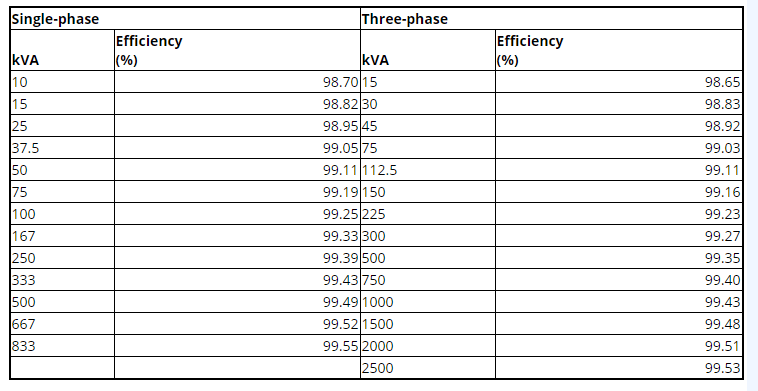The scuttlebutt elsewhere on this forum is that 3-phase transformers that have a closed delta winding on a 3-legged core can have a large amount circulating zero sequence in the delta winding when there a heavy single phase load unbalance. This is particularly true of delta-delta transformers even if the secondary is 3-wire delta. The scuttlebutt is that delta-delta transformers that have a 3 legged core actually run cooler in some instances if the windings of one phase are disconnected both primary and secondary. There are alos similar problems with a wye-wye transformer on a 3-legged core also allow power from all 3 phases to contribute to a secondary single phase to ground or neutral fault. This all because a 3-legged core has very little zero sequence impedance because the return pathway for zero sequence flux is through the air and the case of the transformer.
Most power companies figured out that many years ago and specify that 3-phase transformers have fewer problems when they have a 5-legged, 6-legged, or 7-legged core that provides a ferromagnetic pathway for zero sequence flux.
Another consideration is that if you derate the table values in Annex B of National Electrical Code for a conductor temperature of 90 Celsius and an earth surface temperature of 50 Celsius which will be the case the middle or end of the summer here in Ohio you get these values for single phase and 3-phase duct banks:
3x500 KCM copper for 600 amps single phase or 3-phase using isolated phase and protective earth neutral configuration i.e. all 3 A phase in 1 PVC or fiberglass conduit, all the B phase in the next conduit, etc. This is also the easiest way to have all of the wires of the same phase the same length. I have seen parallel wiring installations that have highly unequal lengths of parallel wires because the registered professional engineer, the electrical contractor, and the electrical inspector did not pay attention in high school geometry class. Whether you you need to count this a 4 ducts for 4-wire systems depends on how much of the capacity of the PEN wires is being used. If the loading of the Protective Earth Neutral does not exceed the installed PEN wires the heat contribution of the PEN can usually be neglected. You will need to reduce wire size to 4/0 to 350 KCM copper before going into the 200-amp circuit breakers of fusible switches. Or, use a main panel with the 3 service switches in it and put in 800 amp main lugs to accommodate the 500 KCM.
Also a good idea to backfill with red colored concrete to 6 inches below the surface as that will be more thermally conductive than most soil. For this it is entirely practical to use three 200-amp service switches which will also be more economical than a 600-amp particularly since you need to divide into 200 amp feeders to get reasonable series short circuit ratings between main and branch breakers. Also, 200-amp time delay class J fuses limit arc flash hazard to negligible levels as proven by the Forklift Truck Short Circuit Test.
4x500 KCM copper for 800 amps using 2 wires per conduit in an isolated phase and PEN configuration.` Keep min mind that will will have 2 wires per duct unless neutral calculations indicatye that the PEN can be done 3x500 KCM. Keep in mind that the 2 ducts of each phase need to be the same length. Just build a mockup using concrete tight boxes, some ENT a.k.a smuft tube, and some 12 guage wires to see if you have done your geometry homework right.
6x500KCM fort 1200 amps unless the PEN can be done as 4x500 KCM in 2 ducts in an isolated phase and neutral configuration.
9x500KCM for 1600-amps isolated phase and neutral using 3 ducts each phase. However, a 1600-amp service switch will be 3 times the cost of a 1200-amp. In other words when you go over certain size boundaries i.e. 255 and 1200 amps for circuits breakers and 200 amps and 1200 amps for fuses switchgear prices will TRIPLE or QUADRUPLE.

